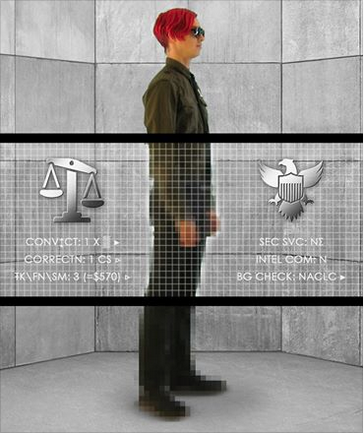
I don’t usually cross-post from my newsletter, but I’m making an exception here. This might be my last post before the site is finally redesigned.
If you’ve been reading my work for a while, you may know that my mom started a church in my living room when I was a kid. It was a tongues-speaking, Rapture-awaiting, exorcism-full ministry focused on hippies, drug addicts, refugees from cults, and assorted others in need. Every Wednesday night, they worshipped in our house in a ritzy Miami suburb. They banged tambourines and Hallelujahed and bound up Satan in Jesus’ name until my father came home and shouted at them to get out or until the neighbors called the cops.
For most of my life, I feared I might have some extreme religious conversion, too. As an adult, after trying on atheism and then Episcopalianism and not feeling a commitment to either, I responded to this fear by becoming a fervent agnostic. I was deeply committed to not knowing. I clenched around uncertainty, all the more so once I learned that my mom wasn’t the only female preacher in her family.
Around the time I turned forty, I started meditating. I studied the Alexander Technique, which, as taught by my teacher, is basically another form of meditation. His approach is especially good for writers and other bookish people who have difficulty being in their bodies. Through all of this, and a billion years of therapy, I opened up to possibilities that had made me anxious before.
When I started writing my book, I could feel myself going in a spiritual direction. I was afraid of what I’d find and where I’d end up, but I decided to follow where the book led me. Recently I went to an ancestral lineage healing intensive, and I’m going to another this summer. It makes me uncomfortable to tell you this, but I’ve decided to own it.
I hand in the draft of my book on June 3! If my editor feels it’s far enough along, I’ll finish revisions by the end of this year with an eye toward a publication date in Spring 2021.
In the coming months, I’ll be starting another newsletter, Ancestor Hunger, for anyone who’s interested in knowing more about that. You can sign up at Substack, if you’re interested. (More info on the About page.)
Updated August 6 to link to the Ancestor Hunger newsletters so far:
- The Family Face — and Gesture (including Thomas Hardy’s “Heredity,” Tim Spector’s Identically Different, and Nicole Chung’s All You Can Ever Know)
- Ancestor-Focused Spiritual Practices (including book recommendations, the Biblical story of Rachel and the household gods, and some people who’ve inspired me)
- Visits From the Dead (including Hilary Mantel’s Cromwell books and Claude Lecouteux’s The Return of the Dead)
- Knowledge at an Atomic Level (Sarah Smarsh’s writing—in Heartland and elsewhere—on poverty and its generational echoes)
- Nothing Destroys a Family Like Inheritance (the title is from a line in an essay by Alexander Chee, keeper of his family’s genealogical records, who writes about inheritance, an ancestor ritual, much more)
- Ancestors Who Enslaved People (including two of mine who did)
- DNA Testing Giveth, and Taketh Away (including Alex Wagner’s Futureface, which I reviewed last year for the New York Times Book Review; a discussion of autosomal DNA testing and inaccurate geographical assignments; and an except from my old Family Tree interview with Laila Lalami)
- Sharing Some Ancestor Hunger (on my granny and the title “ancestor hunger,” and including an excerpt from my Family Tree interview with Celeste Ng)
- Fear of the Family Ghost (including Bertrand Russell’s fear, and the Family Ghosts podcast)




















